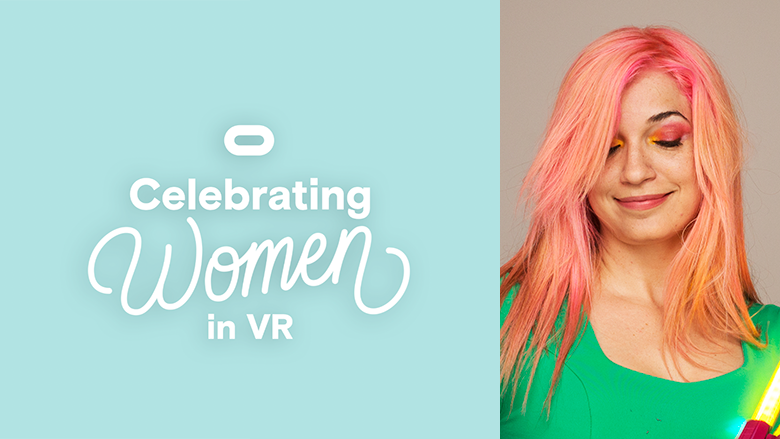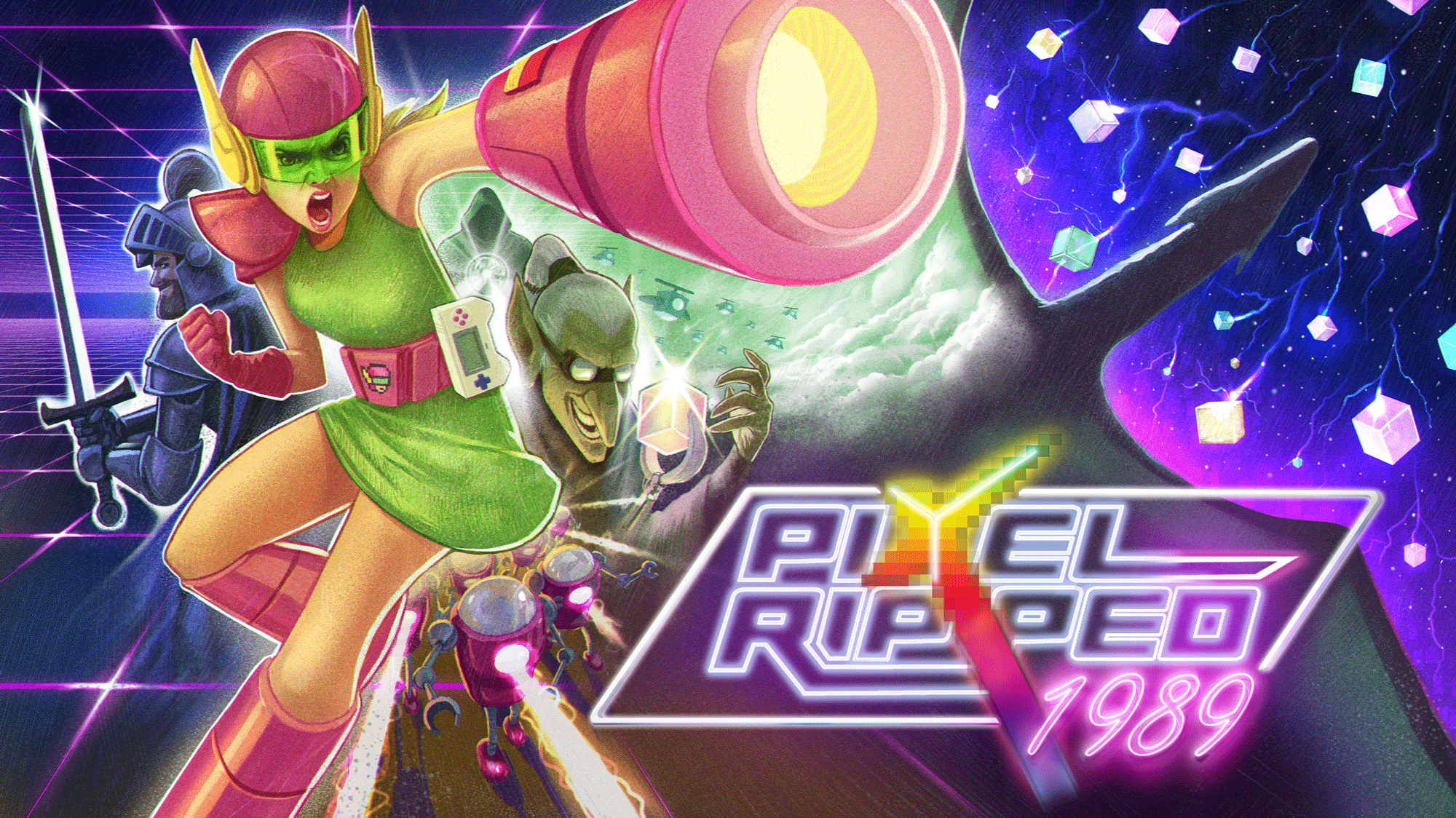Oculus is on string of interviews with the top women inside of the virtual reality industry. Today’s interview? Ana Ribeiro from ARVORE. She is the Creative Director of the studio that is responsible for the Pixel Ripped games.

Oculus sat down with Ana to get a look at her background, her take on inclusion in VR, and where she sees VR going. You can check out the full post on the Oculus website, or the Q&A section below.
Full Oculus Interview
How did you get your start in the tech industry?
Ana Ribeiro: I’ve always played games since I was a little kid, but it took me a long time to consider that my passion for video games could turn out into a potential career. Back in 2011, I had already been working for over five years doing divorces at the Justice Council, and I was running a small pie business. It was during a business course for entrepreneurs where I was studying to get ready to open a pie shop, where a question that changed my life was presented to me: “Have you ever wondered what you would do with your life if you could start all over?”
For the first time, I stopped and really thought about what I, Ana, wanted. It was easy to realize which career my heart was into: game development. I took the leap and decided to go for it, having no skills at that point, just a psychology degree and years of gaming experience. So I flew to England to study for a degree in Games Programming and an MA in Game Design & Development. In 2013, I tried the Oculus DK1 for the first time and since then I have been creating games in virtual reality.
Tell us about your current role.
AR: I’m the Creative Director of the Pixel Ripped series, which pays a wacky multi-dimensional VR game homage to the early days of gaming. Pixel Ripped started as my final project for my MA degree; I had this crazy dream about how it would be to revive childhood experiences and play games like they used to be, and this dream was now possible thanks to VR. So I worked on the prototype and managed to get some funding to keep working on the game with the help of many talented professionals that joined me. Then finally in 2017 I found ARVORE, the publisher which helped not just fund but co-produce the first episode, Pixel Ripped 1989, which got released in 2018, and now we’re working on the next installment of the series: Pixel Ripped 1995.
Who’s your favorite figure from women’s history?
AR: Lady Gaga is a big inspiration for me, the way she innovates and managed to change the music industry. She made history with her creativity and hard work and, most importantly, kept her feet on the ground. She continues improving at her career and manages to help others on the way and stay humble. She is a true game changer. I want to become the Lady Gaga of the games industry.
How do you see yourself making history?
AR: My dream is to inspire young girls around the globe to reach for their dreams and become leaders in their fields. I wish I had more strong female developers to look up to when I was growing up, someone to follow who wasn’t a male figure. I believe that, if we keep up the hard work, we can prove to the world that women are relevant for the industry by releasing great creations and making history—history which will inspire little girls to want to become leaders in the future too.
If you could give one piece of advice to a young girl considering a career in tech or the arts, what would it be and why?
AR: Still nowadays, I see society educating young women to chase a delusional dream of “beauty”, a life goal defined by others. The princess’s dream is way too overrated, and it’s far more interesting to become the hero. We need to stop following, trying to fit into society, and break these rules by simply knowing who we are and what we stand for.
I wish I could tell these little girls the same thing my father said to me once, “Your best husband is your career.” Be independent and you will be successful in any career. Don’t let anyone pull you away from your dreams; stick with it because the answer to success is knowing who you are.
How do you see women pushing the state of the art forward in the fields of augmented and virtual reality?
AR: In such a new media like VR/AR/XR and so many “Rs” to come that we can’t even imagine, we need innovation to break through and truly change what this industry can become in the future. Bringing variety in gender, expertise, and disciplines can increase the chances of innovation in the right direction. We are in a blue ocean right now, where the most out of the box we go, the better we can become. All this variety of vision that women, the LGBTQ community, and men can bring together will just enhance our chances of success.
Where have you encountered support and advocacy for women and other underrepresented groups in the VR industry?
AR: The Facebook group ARVR Women And Allies has been my go-to when looking for support and sharing experiences with other women from the industry.
What concrete steps can people take to help make the tech industry a more inclusive and welcoming space?
AR: Minority groups in any industry usually struggle to be accepted. We can start by helping the ones around us by showing them support and recognizing their hard work. By empowering the women and LGBTQ community, we may help these people to become more confident and successful, inspiring others to also join this industry and help it to become a more diverse and welcoming environment.
How do you go about designing games for a diverse audience and/or ensuring representation of strong women characters in your own work?
AR: I grew up playing games like Megaman, The Legend of Zelda, Super Mario Bros., Super Ghouls ‘n Ghosts, Sonic the Hedgehog, Alex Kidd, Ninja Gaiden, and so on. The list can go forever, but all I can remember are games with strong male protagonists. And I had this frustration growing up, of never finding good games with strong female leads.
So when I designed Dot, the main character of Pixel Ripped, I decided she would become the most badass video game character I could ever make and she would represent all those heroes I grew up playing and always dreamed of becoming. I went way beyond this dream and even became Dot by cosplaying her character at events.
What’s your favorite piece of AR/VR content and why?
AR: Trover Saves the Universe is the only game where I thought to myself, “Oh my god, I wish I could have worked on this game.” This is my cup of tea. It is innovative, creative, mind-blowing, and it keeps the player surprised throughout the whole game. I love how this game was done, and I think that is what the industry needs—getting out of the comfort zone and going crazy.
Where do you see yourself in five or 10 years?
AR: I’m so glad you asked this question. Coincidentally, I’ve recently been writing down a list of goals I want to accomplish in three, five, and 10 years. That really helps me to stay focused and turn these goals into more achievable ones by dividing them into smaller tasks. This practice changed my life and I would like to suggest to the readers to write down their goals too. Life is short, and we have just a few shots to get it right.
I would like to continue creating VR games for years. In five years from now, I want to become more present in the industry and give more talks/workshops. And I expect to have completely released all Pixel Ripped episodes and started a new game.
In 10 years, I plan to have released five game IPs, make an educational game, or find a way to support other developers to kickstart their projects. I would like to be able to help others with my work. My family has a charity in our hometown, situated in the poorest state of Brazil, and I would like to be able to help this institution more than I can do currently.































Sup